The 20th Hydrogen Energy Conference was held in Taiyuan, and a new situation of diversified commercial application of hydrogen energy is taking shape
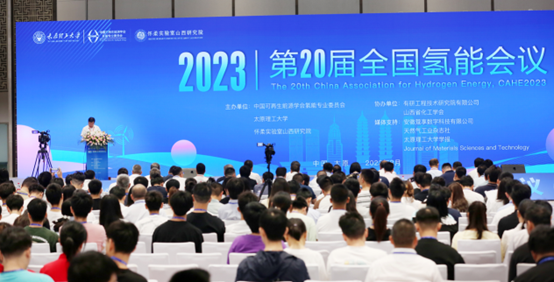
On August 4~6, the 20th National Hydrogen Energy Conference was held in Taiyuan. The meeting pointed out that in recent years, hydrogen energy technology has developed rapidly, the hydrogen energy industry chain has been continuously improved, and the application scenarios have been continuously enriched, which has made positive contributions to reducing carbon emissions, driving economic growth, and improving national energy security. Hydrogen energy is an indispensable and important starting point for achieving the dual carbon goal, and the next 10 years will be an important window period for the development of hydrogen energy. With green hydrogen as the source and carbon reduction as the main goal, a new situation is taking shape to realize the diversification and commercial application in industry, transportation, power generation and other industries.
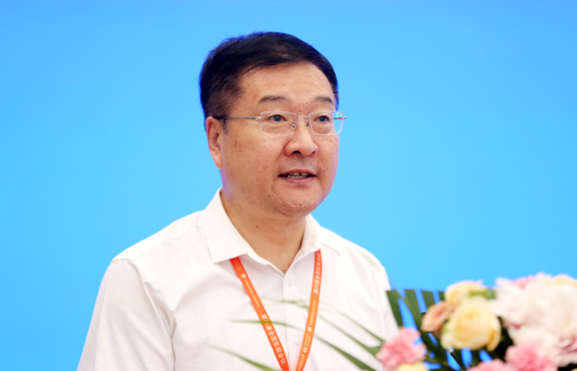
Li Jinping, vice president of the Shanxi Research Institute of Huairou Laboratory and one of the chairmen of the conference, pointed out at the conference that to build a beautiful China and promote Chinese-style modernization, we must unswervingly accelerate the green transformation of energy; To achieve high-quality development, we must completely, accurately and comprehensively implement the new development concept, accelerate the green transformation of the development mode, strive to break the energy, resources and environmental constraints faced by the construction of a modern country, vigorously develop green energy, accelerate the adjustment and optimization of the energy structure, and promote the green transformation of the economic and social development mode with the green development of energy to achieve high-quality development. As a clean energy source, hydrogen energy is pollution-free, high-efficiency, and meets the requirements of sustainable development. Globally, especially in recent years, hydrogen energy technology has been widely used in the energy field, and the industrial chain has been continuously improved, driving economic growth, improving the country's energy security, and making positive contributions to environmental protection.
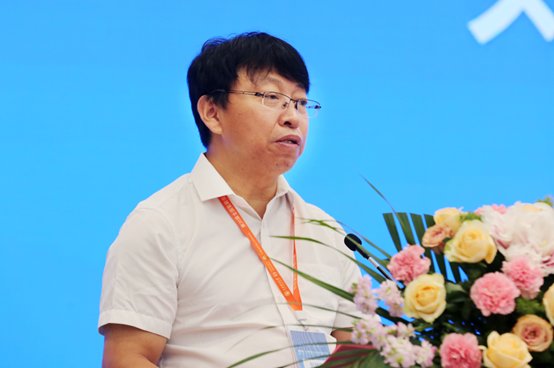
Zhang Xianming, vice president of Taiyuan University of Technology, pointed out that hydrogen energy, as a secondary energy source with abundant sources, green and low-carbon, and widely used, is of great significance for building a clean, low-carbon, safe and efficient energy system and achieving the goal of carbon peak and carbon neutrality. Shanxi Province has two major advantages in the development of hydrogen energy: one is the enrichment of hydrogen sources, and the other is the abundance of application scenarios. Taiyuan University of Technology is making every effort to build a source of clean and low-carbon energy innovation, and has made a series of important research results in hydrogen energy-related research work, and has embarked on a new development path with the characteristics of Taiyuan technology, and will make new and greater contributions in the field of hydrogen energy in the future.
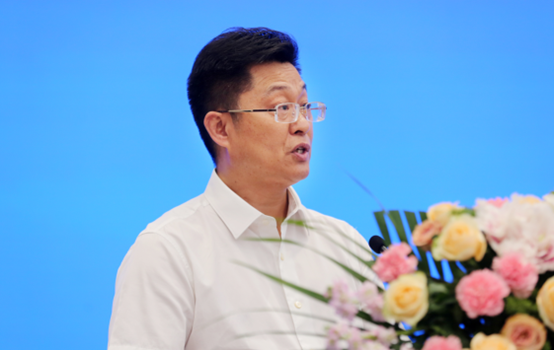
Li Jinbi, deputy director of the Shanxi Provincial Department of Education, said that hydrogen energy is an important part of the future national energy system, and as a major coal province, Shanxi has a natural advantage in the cost of manufacturing industrial by-product hydrogen. Last year, Shanxi Province formulated the "Medium and Long-term Plan for the Development of Hydrogen Energy Industry in Shanxi Province (2022-2035)", marking that hydrogen energy has become an important part of Shanxi Province's efforts to achieve the "dual carbon" goal, further promote the revolution in energy production and consumption, and build a clean, low-carbon, safe and efficient energy system. With the support of the Provincial Party Committee and the Provincial Government, Shanxi's higher education will definitely make high-quality work and high-quality results in the field of energy revolution and hydrogen energy.
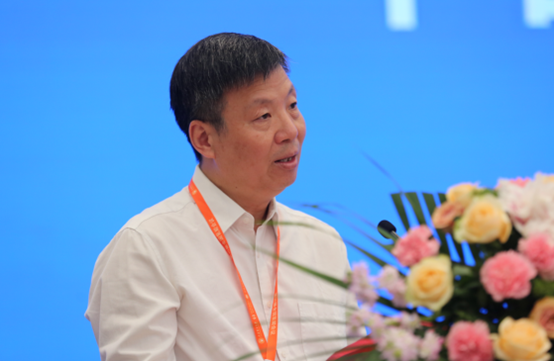
Jiang Lijun, vice chairman of China Renewable Energy, chairman of the Hydrogen Energy Special Committee, and one of the chairmen of the conference, said that in recent years, driven by the dual carbon goal, hydrogen energy has ushered in unprecedented new opportunities for development. Last year, the state released the hydrogen energy industry plan, and in April this year, the working meeting of the inter-ministerial coordination mechanism for the development of the hydrogen energy industry further put forward the requirements of "expanding multiple application scenarios and gradually promoting commercial development", indicating that China's hydrogen energy industry has entered a new stage, with green hydrogen as the source and carbon reduction as the main goal, and a new situation of diversification and commercial application in industry, transportation, power generation and other industries is being formed.
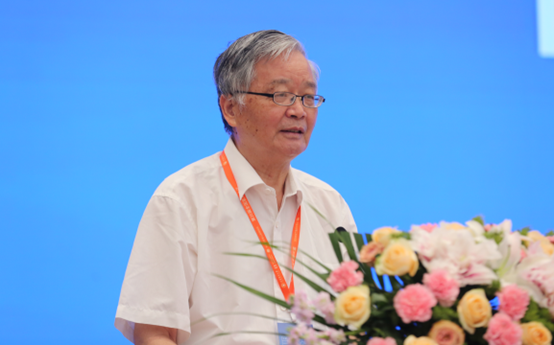
Mao Zongqiang, vice chairman of the International Hydrogen Energy Association, emphasized that the first is to develop hydrogen energy in a down-to-earth manner and make new contributions to the "double carbon" goal. The focus of efforts is on how to directly reduce carbon emissions, rather than coal + CCUS; Second, hydrogen energy research should be expanded to hydrogen agronomy, hydrogen medicine, hydrogen economy, and hydrogen society; Third, China's hydrogen energy is in the early stage of industrialization, and philosophical guidance is urgently needed. For example, for the sake of energy security, we should advocate energy diversification, implement hydrogen and electricity at the same time, hydrogen if it is suitable for hydrogen, and electricity if it is suitable for electricity.
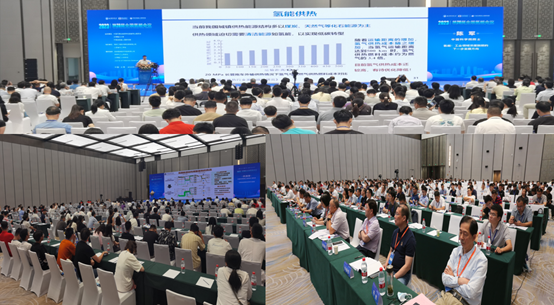
Six academicians and experts made keynote reports, they faced the major needs of the country's dual carbon, based on China's new energy endowment concept, adhered to the principle of first establishing and then breaking, source emission reduction, and end carbon control, respectively, from the perspectives of efficient hydrogen production, liquid sunlight, industrial decarbonization, coal in-situ hydrogen production, integrated energy system and green hydrogen industry, analyzed the huge opportunities faced by hydrogen energy in the context of carbon peaking and carbon neutrality, the challenges faced by hydrogen energy technology in the process of meeting the huge demand for carbon peaking and carbon neutrality, and put forward how hydrogen energy technology can cope with these challenges. They explored new ideas on technological and economically competitive technology paths, and shared their latest research progress. The reports of academicians and experts have pointed out the direction and broadened the thinking for the majority of young hydrogen energy science and technology workers to select research topics, study real problems, and break through the bottleneck of bottlenecks that need to be solved urgently. At the same time, the academicians and experts also left a deep impression on the participants for their equal exchanges and free speech in the process of academic exchanges, creating a good atmosphere and setting a good example for the academic exchanges of hydrogen energy.
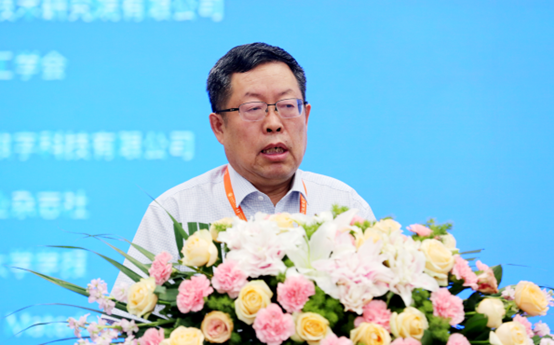
Li Can, academician of the Chinese Academy of Sciences and professor of the Institute of Dahua of the Chinese Academy of Sciences, gave a keynote report entitled "Green Hydrogen Energy and Liquid Sunshine: Opportunities for Hydrogen Energy Development under the Dual Carbon Strategy". Academician Li Can's main views are: 1. Achieving the "double carbon" goal is a strategy for high-quality economic development, and hydrogen energy is the starting point. 2. The transformation of the utilization of fossil resources from energy raw materials to new materials is an inevitable trend of future development and an inevitable path to achieve the strategic goal of carbon peaking and carbon neutrality. 3. Use renewable energy to produce hydrogen, convert carbon dioxide into resources, synthesize chemicals and fine chemicals, and help the development of green, low-carbon, and high-end new materials. Fourth, through liquid sunlight methanol to achieve carbon neutrality in the transportation and industrial fields, large-scale carbon dioxide resource transformation, and promote economic development. 5. Hydrogen energy is taking the lead in the development of transportation, but more attention should be paid to the connotation and irreplaceable role of hydrogen energy in the dual carbon strategy.
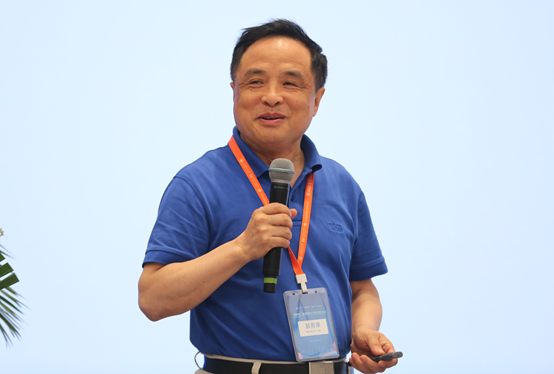
Peng Suping, academician of the Chinese Academy of Engineering and professor of China University of Mining and Technology (Beijing), gave a keynote report entitled "Efficient Power Generation and Distributed Hydrogen Production Technology of Solid Oxide Batteries". Peng Suping's main point of view is that the gradual withdrawal of traditional energy should be based on the safe and reliable replacement of new energy. The overall goal is to find effective technical ways to break the carbon constraints to ensure China's energy security, reduce carbon, replace carbon, bury carbon, and use carbon, and realize the green development of energy security under the dual carbon goals. The direction of deployment is to adopt intelligent green development of coal, clean and efficient power generation of coal, clean and efficient conversion of coal, and CCS/CCUS of coal-based energy. The integrated coal gasification fuel cell (IGFC) power generation technology is a power generation system that combines IGCC and high-temperature fuel cells, which can further improve the efficiency of coal gasification power generation on the basis of IGCC, reduce the CO₂ capture cost, and achieve near-zero emission of CO₂ and pollutants, which is a fundamental technology for coal power generation.
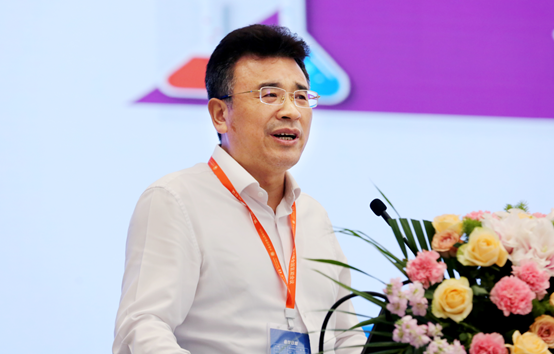
Chen Jun, academician of the Chinese Academy of Sciences and vice president of Nankai University, gave a keynote report entitled "The Next Development Direction of Deep Decarbonization in the Industrial Sector". The main point of view of Academician Chen Jun is that high-quality development is a low-carbon and clean transformation of energy supply and consumption, and a green ecological economy for industrial structure adjustment. Hydrogen energy is an important carrier for the green and low-carbon transformation of energy-using terminals, and the next development direction for deep decarbonization in the industrial field. The first way is to replace raw materials and heat sources to reduce emissions from the source; The second way is carbon dioxide hydrogenation and post-treatment to reduce emissions. In the future, the collaborative innovation of "government, industry, academia, research and application" of the whole hydrogen energy industry chain will lead industrial development through scientific and technological innovation, promote scientific and technological innovation by industrial demand, combine government, industry, academia, research and application, promote economic development and talent training, and focus on the two-way interconnection between basic research and industrial application, and the close integration of higher education and vocational education.
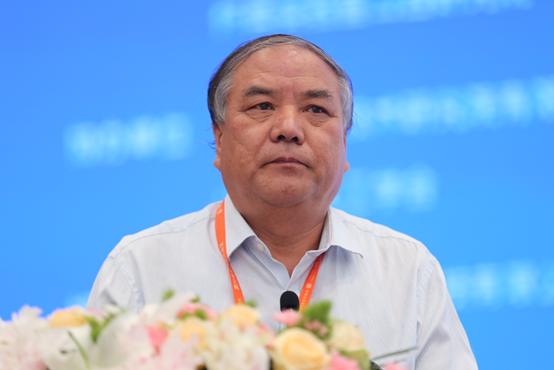
Zhao Yangsheng, academician of the Chinese Academy of Sciences and professor of Taiyuan University of Technology, gave a keynote report entitled "Exploration of In-situ Coal Hydrogen Production and CO₂ Deep Storage". Academician Zhao Yangsheng gave three routes for coal use under the dual carbon goal. First, coal-mining-transportation--combustion (oxygen-rich boiler)-power generation (CO₂ deep storage)--power transmission--electricity consumption is an economically and technically feasible and zero-carbon emission better plan. The second is coal-in-situ hydrogen production--ground hydrogen synthesis of ammonia-ammonia transportation-ammonia use, which is the best solution with superior economy and zero carbon emissions. Third, in-situ hydrogen production from coal, synthesis of methanol, transfer of methanol and methanol to methanol is not a feasible solution for carbon neutrality.
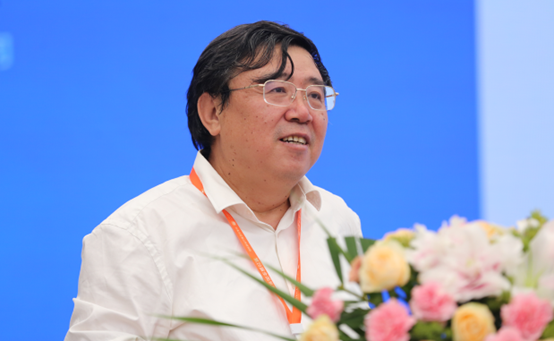
Researcher Xu Honghua, former deputy director of the Institute of Electrical Engineering, Chinese Academy of Sciences, gave a keynote report entitled "The Construction Path of China's Low-cost and Zero-carbon Energy System and the Role of Green Hydrogen in Carbon Neutrality". The main views of researcher Xu Honghua are: First, the zero-carbon energy system based on renewable energy is in line with the general trend of technological development, completely technically and economically feasible in China, and in line with the best interests of the country and the whole society. Second, in the process of transition from the current energy system dominated by fossil energy to renewable energy, we must give full play to the role of the existing system to avoid wrong paths, not to cause big waste and miss development opportunities. Third, the energy sector is the top priority to achieve carbon neutrality, and there is a lot to be done. Fourth, green hydrogen is a back-up technology to achieve carbon neutrality and plays a key role in the non-energy use of fossil fuels.
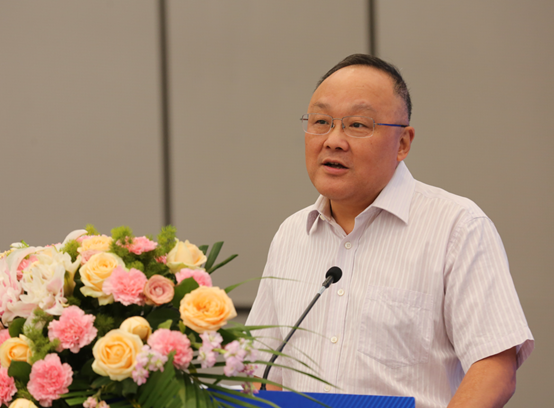
Jiang Ning, Deputy Secretary-General of China Hydrogen Promotion Association and former chief expert of Sinopec Sales Development Plan, gave a keynote report entitled "Discussion on the Prospects and Opportunities for the Development of Green Hydrogen Industry". Chief Jiang Ning's main point is that the carbon neutrality strategy has become a global consensus, and green hydrogen is an excellent way to achieve carbon reduction. The development opportunities of the green hydrogen industry are mainly reflected in three aspects. The first is hydrogen transportation. Green hydrogen has huge development opportunities in the transportation sector, and the demand for hydrogen in China's transportation sector will reach 26 million tons by 2050. The second is hydrogen and ammonia fusion. Hydrogen and ammonia fusion is an important development opportunity for the green hydrogen industry in the future. Replacing with green hydrogen will greatly reduce carbon emissions, and green ammonia as a carrier will greatly improve the transportation efficiency of green hydrogen and reduce the terminal cost of green hydrogen. The third is hydrogen-based refining. The carbon emissions of the petroleum and petrochemical industry account for about 10% of China's total carbon emissions, and green hydrogen refining is an important way to achieve carbon peak and carbon neutrality in the petrochemical field, with broad space for future development.
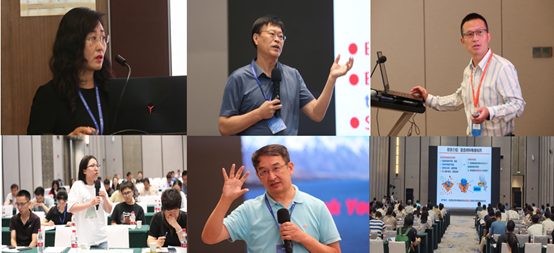
The conference set up "renewable energy hydrogen production and other hydrogen production technology", "hydrogen storage, transportation technology and hydrogen refueling station", "fuel cell and electrocatalysis", "hydrogen energy application", "hydrogen safety and standard specification", "hydrogen energy policy and industry" 6 branches, each venue is wonderful, the atmosphere is warm, everyone together, not only exchanged the innovation and development achievements of hydrogen energy technology in recent years, discussed the solution to the technical bottleneck that restricts the development of hydrogen energy, but also enhanced friendship and found new cooperation points.

The meeting pointed out that in 2022, China's annual hydrogen production will reach 37.81 million tons, 17,000 hydrogen fuel cell vehicles have been sold, 350 hydrogen refueling stations have been built, and green hydrogen demonstration projects with considerable scale and close integration with industrial decarbonization have emerged in an endless stream, and China has become a hot spot and highland for global hydrogen energy development.
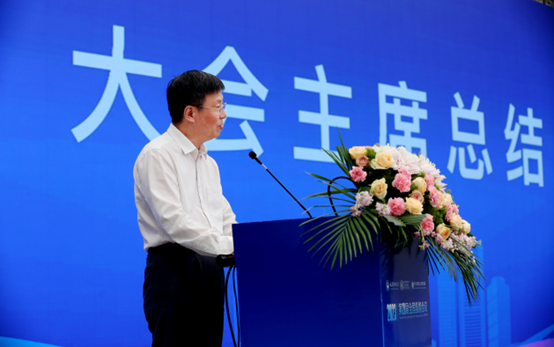
Jiang Lijun emphasized that the current rapid development of the hydrogen energy industry is not based on a substantial breakthrough in hydrogen energy technology, but due to the rapid expansion of demand, and the bottleneck of hydrogen energy technology and the lack of hydrogen energy talents have seriously restricted the development of the hydrogen energy industry. Some overly conservative regulations have restricted the development of the hydrogen energy industry and seriously restricted the promotion and application of hydrogen energy demonstration. Therefore, in order to fundamentally ensure the healthy development of the hydrogen energy industry, on the one hand, it is necessary to improve standards and regulations, formulate relevant policies, on the other hand, it is necessary to accelerate the cultivation of hydrogen energy talents, vigorously develop hydrogen energy technology, and strive to achieve substantial breakthroughs in intrinsically safe and economical hydrogen energy technology, and achieve wide application in industry, transportation, construction, power generation and other industries that are difficult to decarbonize.
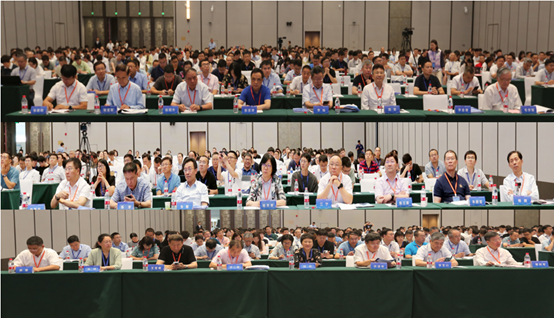
The conference was co-sponsored by the Hydrogen Energy Professional Committee of the Chinese Renewable Energy Society, Taiyuan University of Technology, and Shanxi Research Institute of Huairou Laboratory, and co-organized by the Industrial Research Institute and the Shanxi Chemical Industry Society. The conference had nearly 1,000 offline participants and 26,000 online participants, which was an unprecedented event and became a milestone in the history of the National Hydrogen Energy Academic Conference. A total of 401 papers were received, including 6 keynote reports, 75 invited reports, 110 oral reports, 210 posters, and 22 excellent poster papers.







